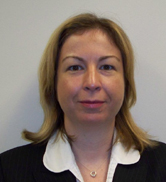I imagine we’ve all been in situations where we are trying to implement a change of some sort for the good of the business, and those around us just don’t seem to get it! Frustration builds up on both sides and momentum can be lost.
Involving the people affected by the change is key to moving forward; from those pressing the button to those owning the process itself. Managing all stakeholders is critical, and ultimately defines the level of success of the Sales and Operations Planning (S&OP) process. It is important to remember that change is personal for people, and if not fully on board, they can spend forever in the stages of denial and resistance!
So, how do we engage our stakeholders, you may ask? Starting with the sponsors is a good start, as they are ultimately the business controllers. And understanding where they are in achieving company goals, what’s important to them and then how to close that gap. The key phrase for all stakeholders to understand is, “What’s in it for me?”, or put simply “WIIFM?”. Relating your communication and change to their requirements will gain a move in the right direction. Gaining the support of key individuals who are influential in the business, or “allies”, will help support your arguments and help you to gain traction. This is especially beneficial if they are the line manager of the end users making the change. Education is another trick in the book, particularly using a business case methodology to advising people of the reasons behind change. For example, we can say, here’s where we are now and our issues, and here’s the ideal. So why wouldn’t we want to change?
Ultimately the Sales and Operations Planning process needs to add value to the business in order for it to be a success. To do this requires change in each stage of the implementation; in process, structure, and roles and responsibilities, all of which will make people feel uncomfortable at the beginning. However, the diverse skills of the S&OP Leader need to be able to overcome any barriers to change in order for the Sales and Operations Planning process to succeed.
Your comments and questions are welcome. I’ll be sharing more on the role of change management in S&OP at the APICS & IBF Best of the Best S&OP Conference taking place in Amsterdam, 15-16 May. Perhaps, we’ll see you there.
Rachel Stafford, CPF
Head of Demand Planning
Norgine



